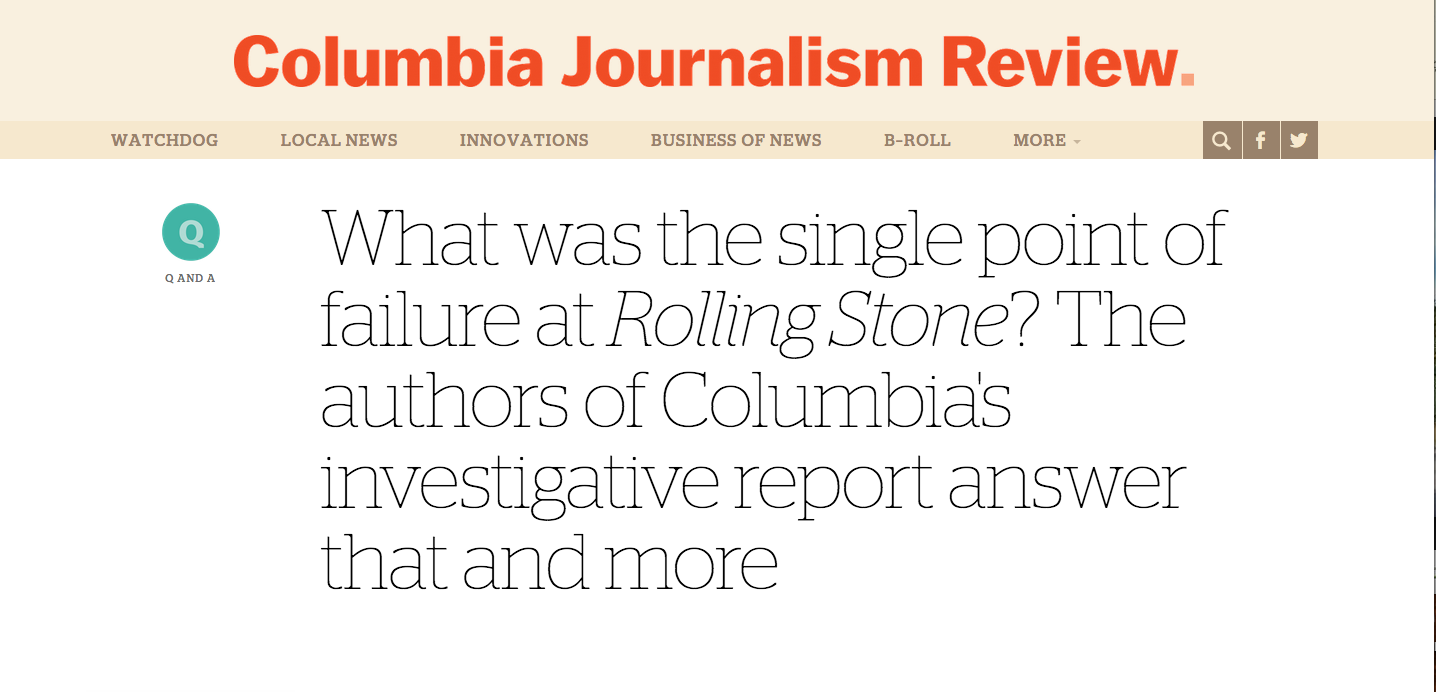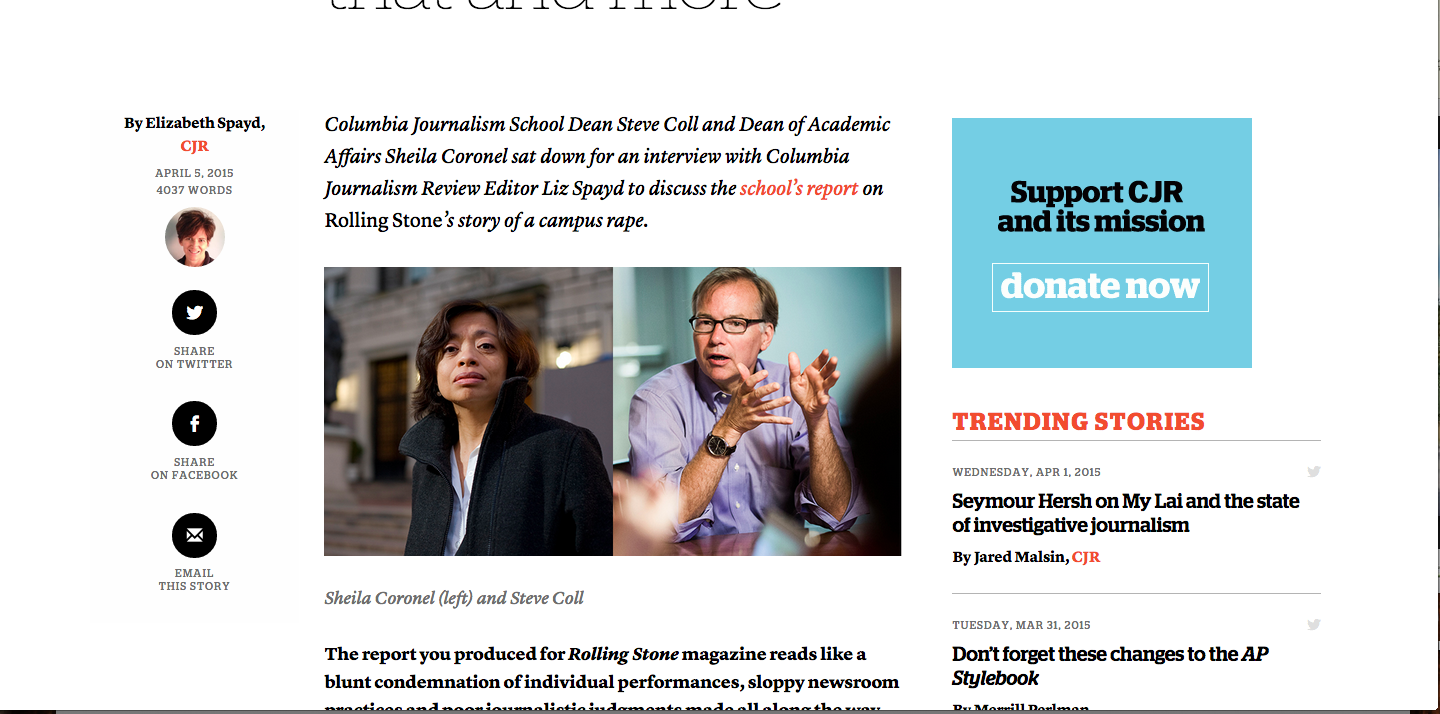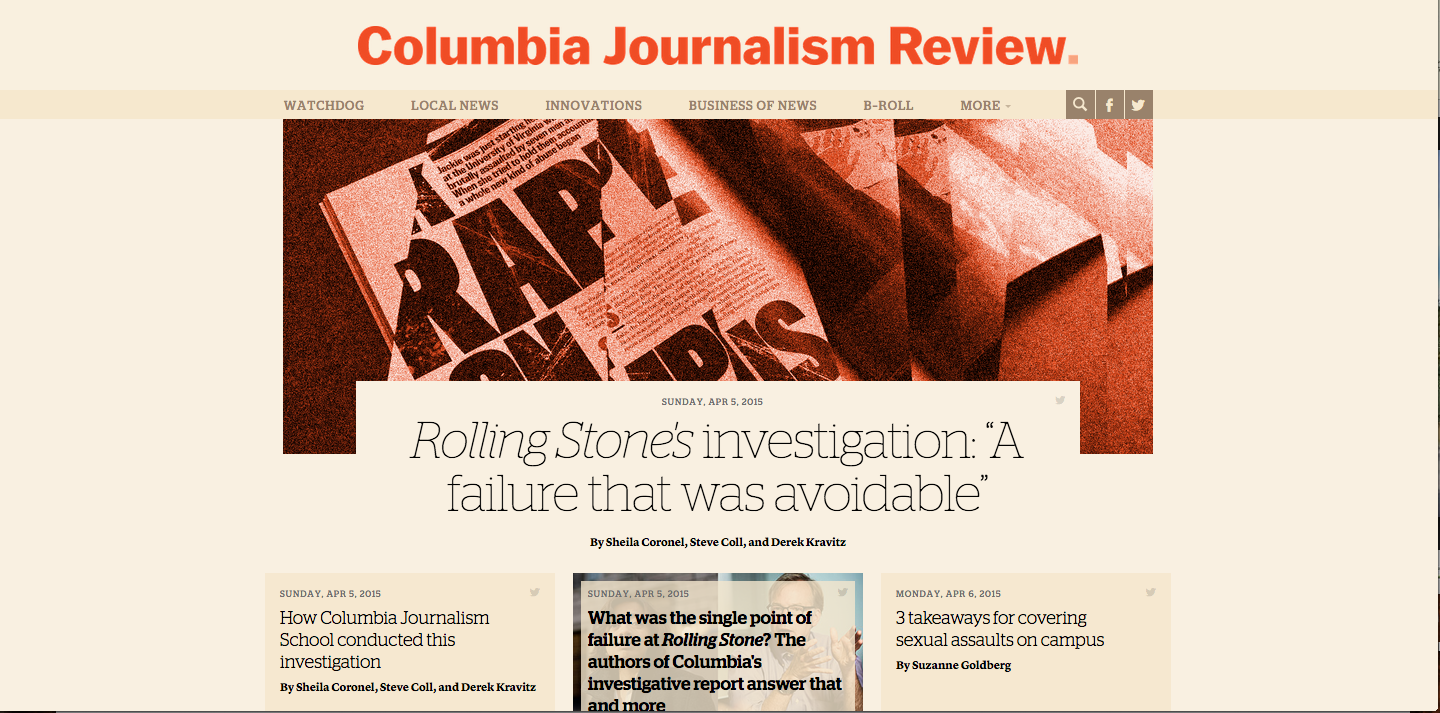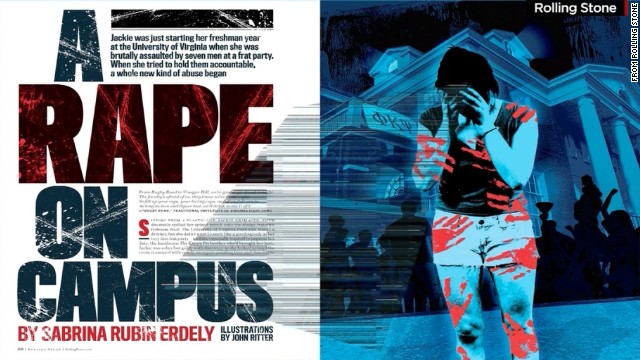



As readers of TheMarioBlog know, we at Garcia Media completed a total rethink/redesign of Columbia Journalism Review (CJR) recently. It is a project that has drawn new, positive attention,since CJR recognized as one of the leading media journals.
Now, six weeks after the launch, the website becomes a showcase for a major story, one in which the Columbia University Graduate School of Journalism has played a key role.
Last November, Rolling Stone magazine published a story about the University of Virginia and an alleged incident of rape by members of one of the University’s fraternities. The story was told mainly through the voice of a subject, “Jackie,” who spent considerable time talking to the Rolling Stone reporter, Sabrina Rubin Erdely.
Controversy started as soon as the piece appeared, with some questioning the veracity of the story and, furthermore, the journalistic integrity and methodology accompanying it.
Columbia Journalism School entered the scene when the Dean, Steve Coll, was asked to conduct a thorough investigation of the journalistic side of the story. Together with Sheila Coronel, dean of academic affairs, they proceeded with the investigation and they have just released their findings.
In a nutshell: the study shows that Rolling Stone, its editors and the writer of the story did not follow even the most traditional of journalistic practices. According to CJR, the School’s report reads “like a blunt condemnation of individual performances, floppy newsroom practices and poor journalistic judgments made all along the way. “
The story in CJR
We at Garcia Media were particularly interested in watching how the exclusive story would be displayed in the new website. We felt proud of how the visual and journalistic elements came together. (Our Reed Reibstein contributed a photo-illustration as the lead image.)
CJR included an in-depth interview with Dean Steve Coll and Sheila Coronel.
Highlights of that interview:
Steve Coll:
I do think that, as journalism becomes more deinstitutionalized, there is a question around, how younger or freelance repórters learn, at an operating manual level of retail, what those practicas are. Even if you read them on the Society of Professional Journalists’ website, when you’re putting them into practice in the field when reporting on a complex story, especially early in a career, you need to talk about them with an experienced peer to say, “How should I handle this confidentiality agreement I just made with a source?” or “How can I release myself from the box I managed to put myself in?”
Sheila Coronel:
I think if you think of it in terms of the one avoidable and easily correctable error, that’s probably it. But if you think of severity in the sense of what was the most serious mistake they made, I think overol it was putting the story, the burden of the story, on just one source and not attempting to verify various aspects of that story. But certainly not contacting the three friends who saw Jackie the night she said she was attacked was the single avoidable mistake. It was the most fundamental error.
Presenting such a large-scale story always presents challenges.
“Our challenges were preparing for a hurricane of traffic, and we survived. As for the design itself, it was ideally suited to convey the power and seriousness of the subject we were dealing with,” said Liz Spayd, editor and publisher of CJR.
Of related interest
As presented by the American Press Institute
No one at Rolling Stone will be fired for the UVa. story (CNN Money)
Jann Wenner, publisher of Rolling Stone, will not be firing anyone on the Rolling Stone staff after the release of Columbia Journalism School’s review of the magazine’s UVa. rape story. Wenner says he believes the mistakes made were unintentional rather than purposefully deceitful. The article was formally retracted by managing editor Will Dana in an editor’s letter with the review and said Rolling Stone is committing itself to following the recommendations outlined in the report.
+ Sabrina Rubin Erdely, author of the article, issued a formal apology Sunday night: “Reporting on rape has unique challenges, but the journalist still has the responsibility to get it right.” (New York Times); Wenner on criticism Rolling Stone has received (Richmond Times-Dispatch)
+ Lessons from what went wrong: When reporting on emotional stories “empathy can also be a source of vulnerability for journalists, lowering their defenses against bad information” (New York Times); Jay Rosen: “Let your reporting drive the narrative, rather than the other way around” (Pressthink); “Rolling Stone handed this off to Columbia Journ. School and gave it no more thought. It’s accountability laundering. Mag has done nothing.” (@CraigSilverman, Twitter)
Related in TheMario Blog
Rolling Stone Rape Story and the Role of Graphics
https://www.garciamedia.com/blog/rolling_stone_rape_story_and_the_role_of_graphics